History of Trolling
History of Trolling for Albacore Tuna
Using Trolling Poles & Jigs on the High Seas
The art of Trolling could be as old as man himself. In 2011, while digging in the Jerimalai cave of East Timor, Professor Sue O'Connor from the Australian National University in Canberra and a team of scientists uncovered over 38,000 fish bones from 2,843 fish - dating back 42,000 years.
The biggest discovery was the unearthing of a fish hook made from a shell, which is between 16,000 and 23,000 years old.
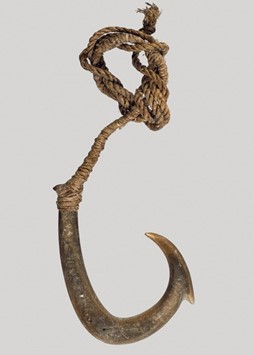
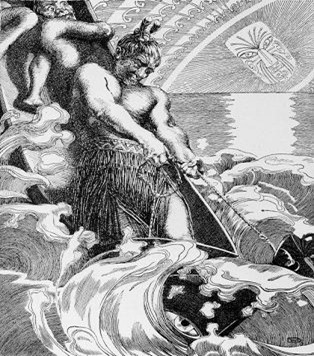
Pacific Islanders, across the Ocean, tell of a legend of the demi God, “Maui”, who fished up the Islands across the Pacific with a giant fish hook. A strong & attractive hook, tied to a line, left trailing behind the canoe or boat, could catch fish for food on their long voyages from Island to Island. It was a means of survival & believed to have been a gift from the Gods. The story has been passed down from generation to generation all across the Pacific.
1st Albacore Tuna Trollers were sailing around the Bay of Biscay in 1850.
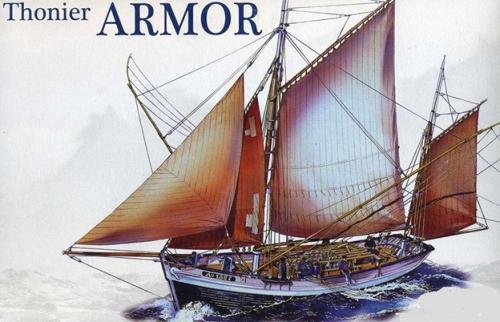
Catching Albacore Tuna, using sail boats with “Trolling Poles”, started as early as 1850. From June to October, in the Atlantic Ocean, schools of albacore tuna ran along the Coast of Spain before turning into the Basque coast. This is known as the golf of Gascony, or “Bay of Biscay” where the countries of Spain & France meet. The tuna then turn due North & Northwest, thus gradually moving away from the coasts following the ocean bottom conjures & sea temperatures, heading towards Ireland. This offshore fishing entails two types of constraints: Boats capable of sailing on the high seas & being able to return quickly to port to sell their tuna and take shelter in the event of a storm. Following the migration of the Albacore could be a long range area, depending on each season. This attracted fisherman, from all over the Atlantic, whom were savvy to Trolling with “Tangons”, or outriggers & “ jigs”. Fishermen from Denmark, Holland, Sweden, Ireland, Spain, Italy & of course France all taking part of sailing fleets using this method of fishing. Not only for albacore tuna, but for Mackerel fish also.
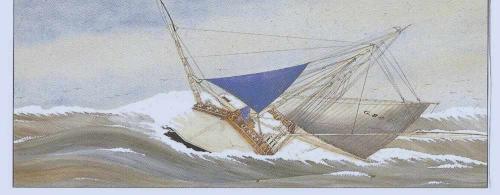
Around 1850 the fishermen of the island of Groix, Brittany, France, used their sardine boat & skiff to catch Albacore, following the northern migration of tuna by rigging trolling lines on their long Trolling Poles, or outriggers.
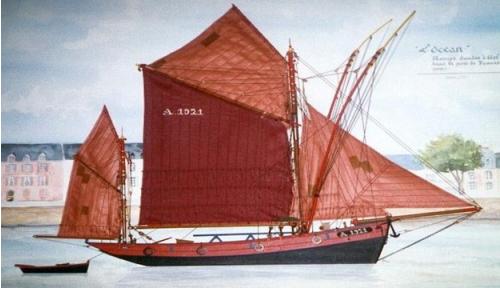
In the 1880s a new type of boat appeared; the “dandy”, quickly "frazed" as dundée. It is a "cutter with tape-cul" rigging, which means that it has two masts: a large-mast always with pible (i.e. made of a single piece), a large sail (gaff), a front sail (the foc) and a rear sail (the tape-cul). the main feature of the dundée, which differentiates it from other cutters with an ass-kicking, is the presence of a malet tail (top sail) to regulate the listening of the tape-cul, instead of a boom pivoting around the mast. The keel can exceed 12 m in length. It is said to be "in difference" to promote fast edge transfers. This would allow the vessel to turn around quickly as to “back-tack” without losing too much speed, or tip too far over to one side. The vessel is said to weigh 50 – 60 tons & carry a crew of about fifteen men.
As soon as the school of fish is spotted, sometimes even as soon as they leave the port, the two tangons (out riggers or Trolling poles) are lowered down to around a 45% angle from the water. This gives the 3-5 fishing lines a spread as they lay in the water. The vessel must try to maintain a speed of 5 to 7 knots. This is an essential condition for albacore fishing. Fishermen drug their Jig lines looking for ideal conditions like:
-The bubbling of the surface due to the movements of tuna during their sardine hunts;
-The jumping of the tuna in the waves, or in their wake behind the boat;
-Slicks or oily spots, the school of tuna, tightened on the surface, slows down the lapping of the sea which causes a slick looking spot.
-Birds that are feeding on fish being driven to the surface by the tuna.
By 1905, the dundée tuna boat started to catch on. It soon became the most popular vessel for the industry right up to the end of the Second World War. The Dandy, or “Dundee” was the symbol for “sailing fishing”. At the beginning of the 1930s there were more than 870 tuna vessels in and around Brittany, France.
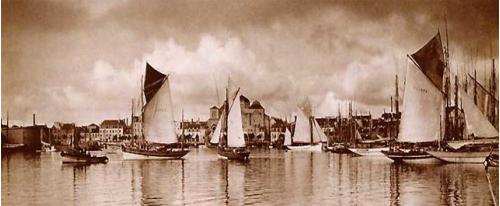
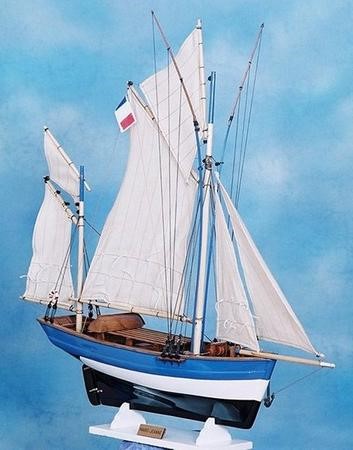
La Marie-Jeanne is a dundee-tuna boat from Concarneau, France. It is part of the large fleet of albacore (white meat) tuna fishing sailboats and is the pride of Breton fishermen. She fished for tuna between June and October and set out to the coast of Mauritania. The trips could last two months. Like all tuna vessels, it is equipped with tangons (Trolling Poles), a kind of fishing pole of more than 20 meters long, placed on each side of the large mast that is folded outward during fishing.
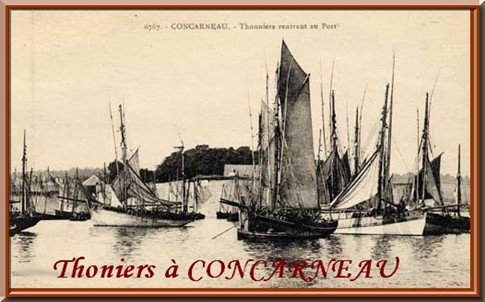
In June 1940, during the German invasion of France, the F/V “Mutin” was at Plymouth. She was requisitioned by the Royal Navy to transport men and equipment to France. Equipped with tangons (trolling poles) and tuna racks, it mingled with the fleet of fishing boats. She was armed and even transported fake tuna filled with explosives, which she had to send to France after sailing through the real tuna vessels. Allies attacked the tuna vessels, suspected of supplying fish to the German army. Many of the sailing fishing tuna boats were destroyed during the war, as they could not all be trusted. The fishery never recovered & declined from then on. The trend towards motorization and profitability have also contributed to the disappearance of the elegant tuna boats with multicolored sails. Tuna sailing fishing ceased altogether by 1962.
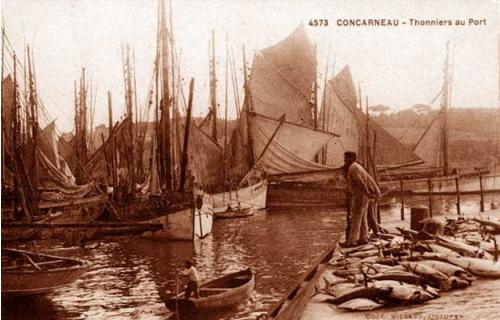
Trolling with “Hand Lines” & “Polling” off the US East Coast
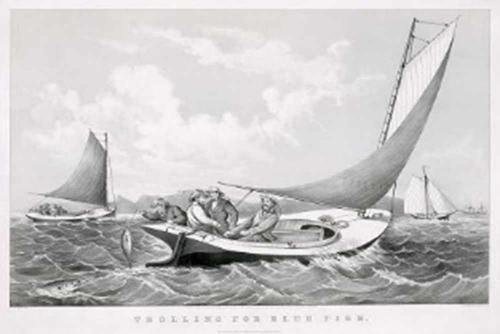
In 1866, sailing “Chebacco” boats were used for Trolling for “Blue fish”, commonly found close to the East Coast. Jigging with polls off the side of the boat, catching Mackerel, became a fishery. It didn’t last long after fishermen started using seine nets, or gill nets. Using Jigs & trolling was considered “The old method”. There is no record of any quantity of Albacore caught on the East Coast, nor any sign of use of Trolling Poles, or “tangons” on any sailing boats.
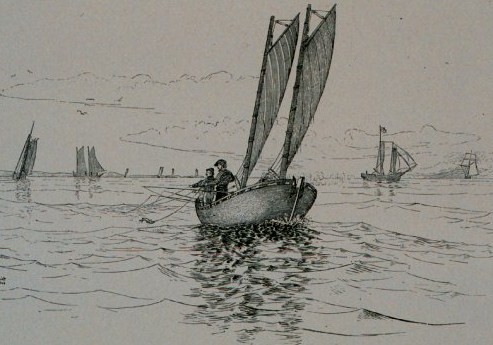
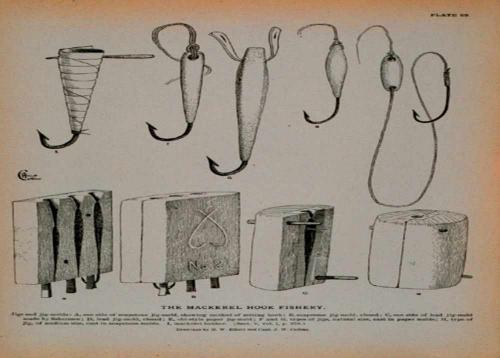
Albacore Tuna abundant on the West Coast. Southern California
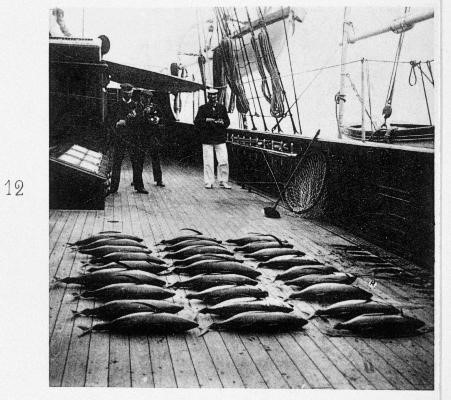
Avalon Bay, Santa Catalina, CA. 1902 aboard the SS Princess Alice. I think they were using “hand-lines”. This picture was on the Noaa history website. Don’t know why they took it off.
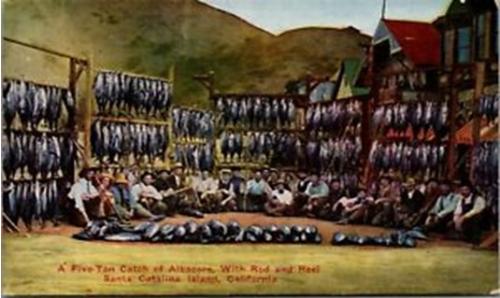
In 1910, a 5 ton Catch of Albacore, using Rod & Reel. Santa Catalina, California.
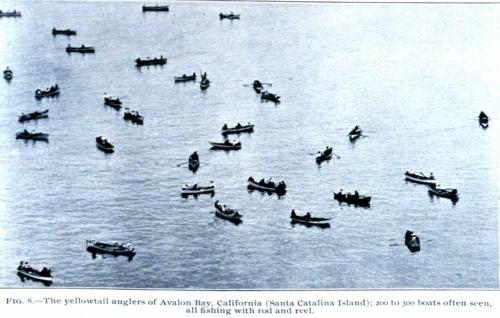
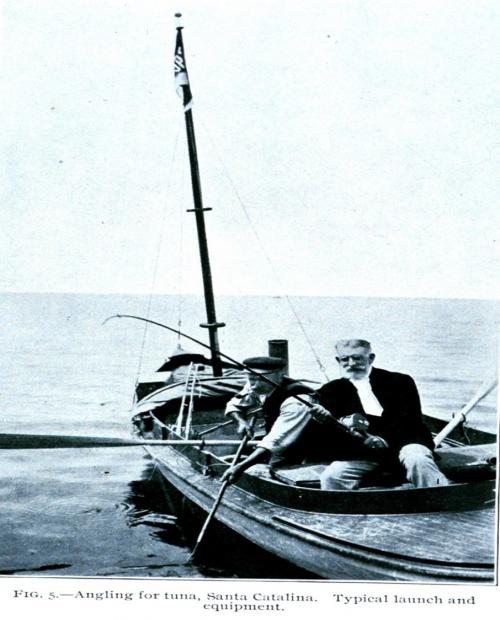
Sport fishing, Polling, “drailing” AKA - Bait fishing, & Trolling for Albacore tuna all took off like wildfire on the West Coast. All three methods of fishing use “hook & line” to harvest the tuna. Boatyards couldn’t build boats fast enough. 25ft-35ft boats, built for Salmon fishing, off the Coastal rivers, were outfitted with “Trolling poles”. West Coast fishermen devised a way to troll bellow the ocean surface using 3 weighted lines, attached to a trolling pole, on each side of the boat. The lines are staggered and kept away from each other, so they don’t tangle. This method became a big success for harvesting Salmon on the open ocean. As the Trolling boats ventured further way from shore, albacore tuna schools were discovered. Fishermen would only need to change their lines from Salmon to Tuna & continue fishing. “Trolling Poles” were used for both fisheries. Thus, the “Salmon & Tuna” Troller.
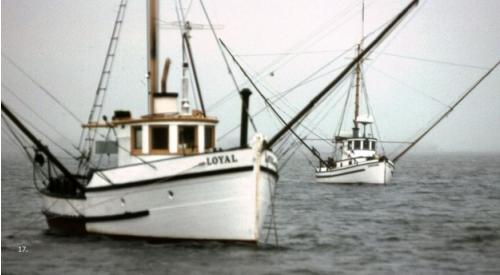
Salmon Trollers
Below is a Salmon troller out on a Tuna trip. That’s no Salmon coming aboard!
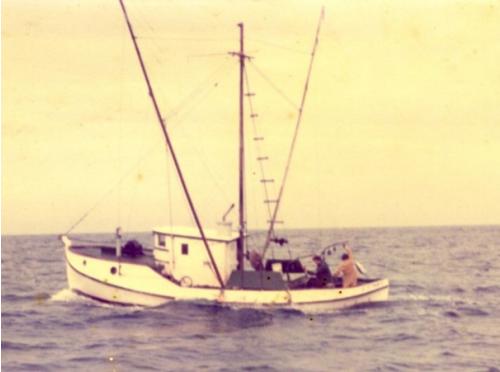
Albacore Tuna boats used “Trolling Poles” or outriggers, passed on by our forefathers from the old country. Diesel engines now replaced the colorful sails once used in Europe. Some of the “old time” fishermen would put up a” steady sail” to keep the boat from rolling, but also for a traditional look from the past. The fleet grew like gangbusters up until World War 2. The US Army "enlisted" the commercial fishing fleet of Southern California into WW2 for service in the South Pacific. Half of this fleet was sunk by Japanese submarines, and very few of the remaining ever returned to the states.
The Food and Drug Administration contracted with Kettenburg Boat Works to build a fleet of replacements. The yard built four 32ft and eight 38ft fishing boats to replace the fleet. Fishermen that returned from WW2, having experienced the vastness of the Pacific & it’s bounty of fish, were eager to build bigger boats that would take them further offshore for tuna fishing. Soon 38ft boats weren’t big enough.
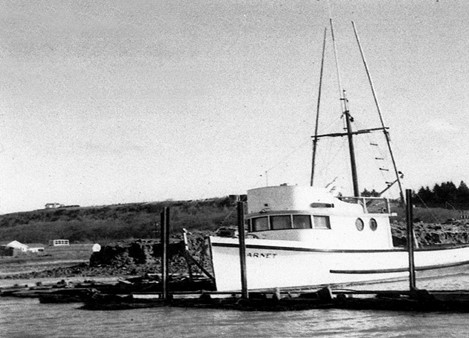
The 38ft Kettenburg built boat was one of the favorite Albacore tuna trollers on the West Coast for it’s time. Many war veterans & tradesmen took to fishing & boat building. Building boats with freezer systems, hydraulic systems, steel hulls instead of wood. Soon there were over 500 Albacore Trollers by the mid 1960’s. The Albacore Troll industry was prosperous & thriving.
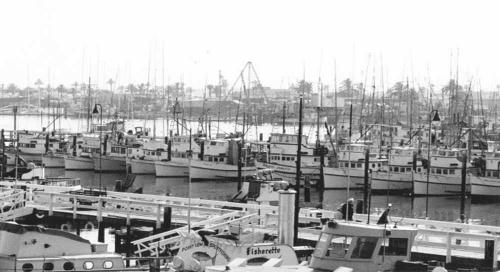
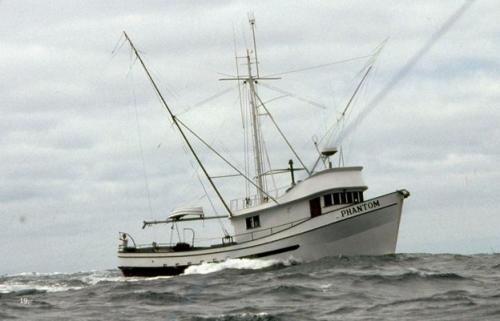
By the early 1970’s, 50ft & 60ft vessels were being built with a fish hold capacity of 30-50 tons & able to stay at sea for over 60 days. The trend was “go west young man”. The farther west the boats went, the more fish they found, & the faster they filled up. Fishermen learned, by inserting a tag into the fish and releasing it back into the sea, that the same tuna was caught, across the ocean, by the Japanese Pole fleet. This indicated how vast the migratory pattern of our Pacific Albacore truly was.
In 1978, a group of Albacore Trollers sailed Northwest from Hawaii out to the international “dateline”, before running into large schools of tuna. A large purse seine vessel was anchored off the coast of Midway Island to receive the fish & take them to market. This was the birth of the “Midway Fleet”. Soon after, up to 30 boats left the West Coast, headed for Hawaii, then up to the fishing grounds to fill up with Albacore. It was great fishing!
In 1982, the Midway Troll fleet was overtaken by a High Seas gillnet fleet coming from the West. Little did the troll fishermen know that, since WW2, while the West Coast was developing a Troll fishery, Japan, & other Asian countries, were developing a gillnet fishery & they were now head-to-head in the middle of the Pacific Ocean.
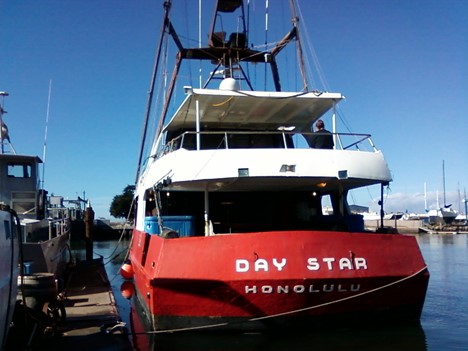
The Trollers never stood a chance. From that time on, the “Midway fishery” declined & died off. Trolling is no match for gillnets. The same Albacore Trollers set out for the South Pacific, by way of American Samoa & Tahiti in 1986. More fishing grounds was discovered, only to be overtaken by driftnet boats a few short years later. Finally, by 1989, the world took notice of the devastation caused by gillnet fishing on the high seas & called for a ban on gillnets in international waters. By 1993, the gillnet fleet left the Pacific Ocean & gave life back to Pacific Albacore Trolling fleet. From 1993-2002, the fleet grew & prospered. The fleet grew to over 50 vessels ranging from 48ft to 120ft. The “off-shore” trollers started offloading to freezer vessels so they could remain on the fishing grounds to catch more fish.
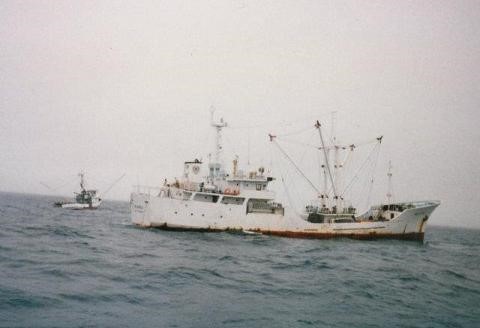
All was going so well until 2002 when the IUU driftnet fleet returned to the Pacific. In less than 2 years, the off-shore Albacore Troll fishery went belly up, again.
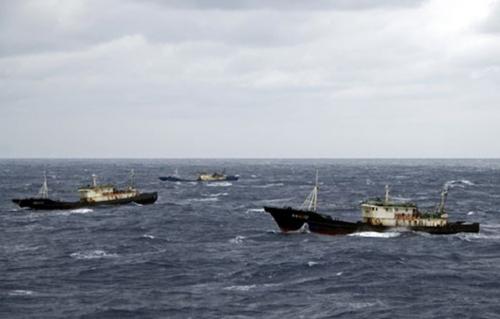
From 2002-2022, the Asian IUU driftnet fleet remains in the Pacific. For the past 20 years, Albacore Trollers have been waiting for their chance, in vain, to regain their “freedom of the sea”, “freedom of fishing”, in the Pacific. Albacore production, on the West Coast, has been dwindling for years now. Less & less boats participate in the fishery because of lack of fish & prosperity. If only Asian Countries would take up Trolling for Albacore Tuna, the ocean would be a better place.





 Follow
Follow

